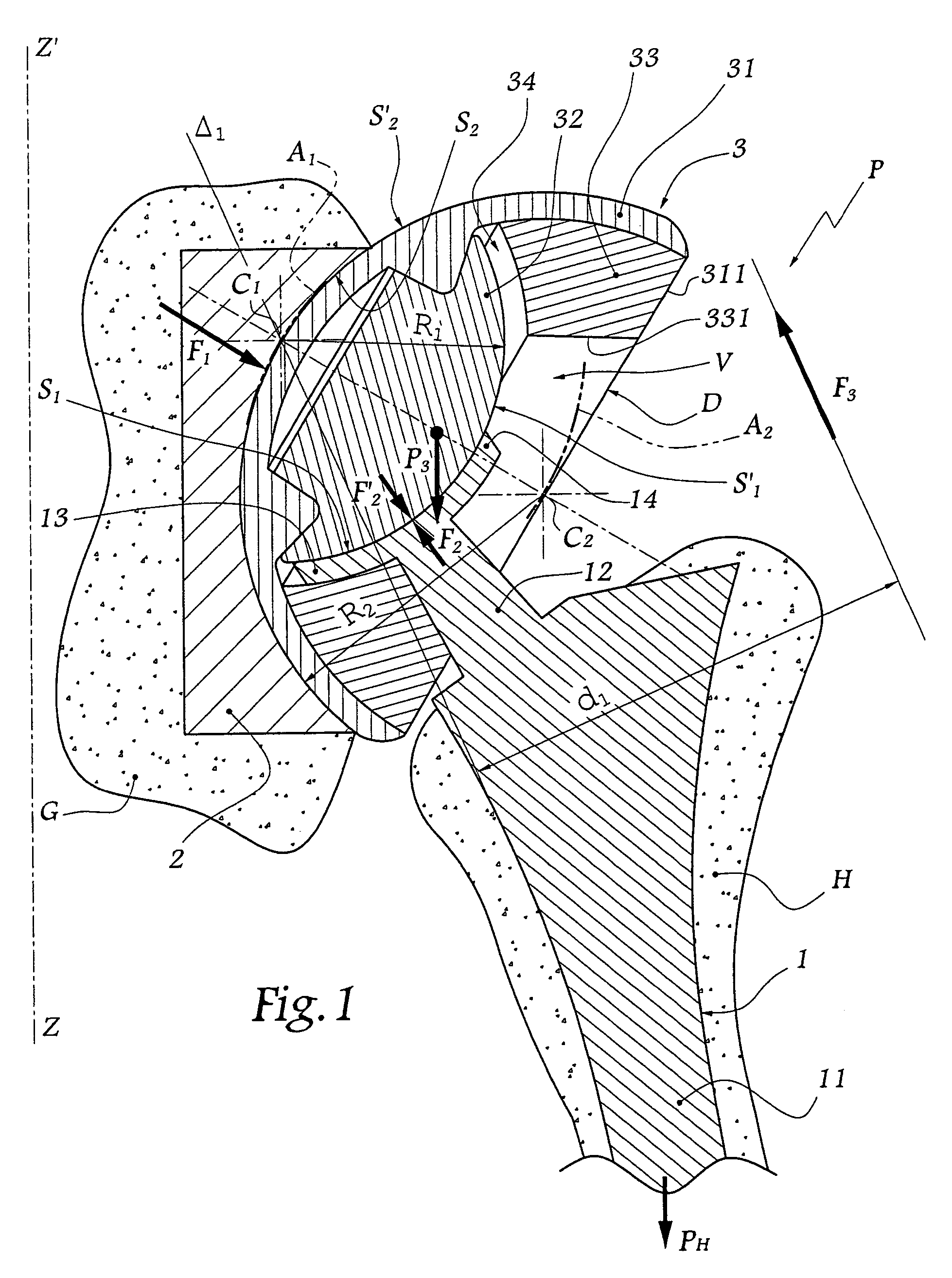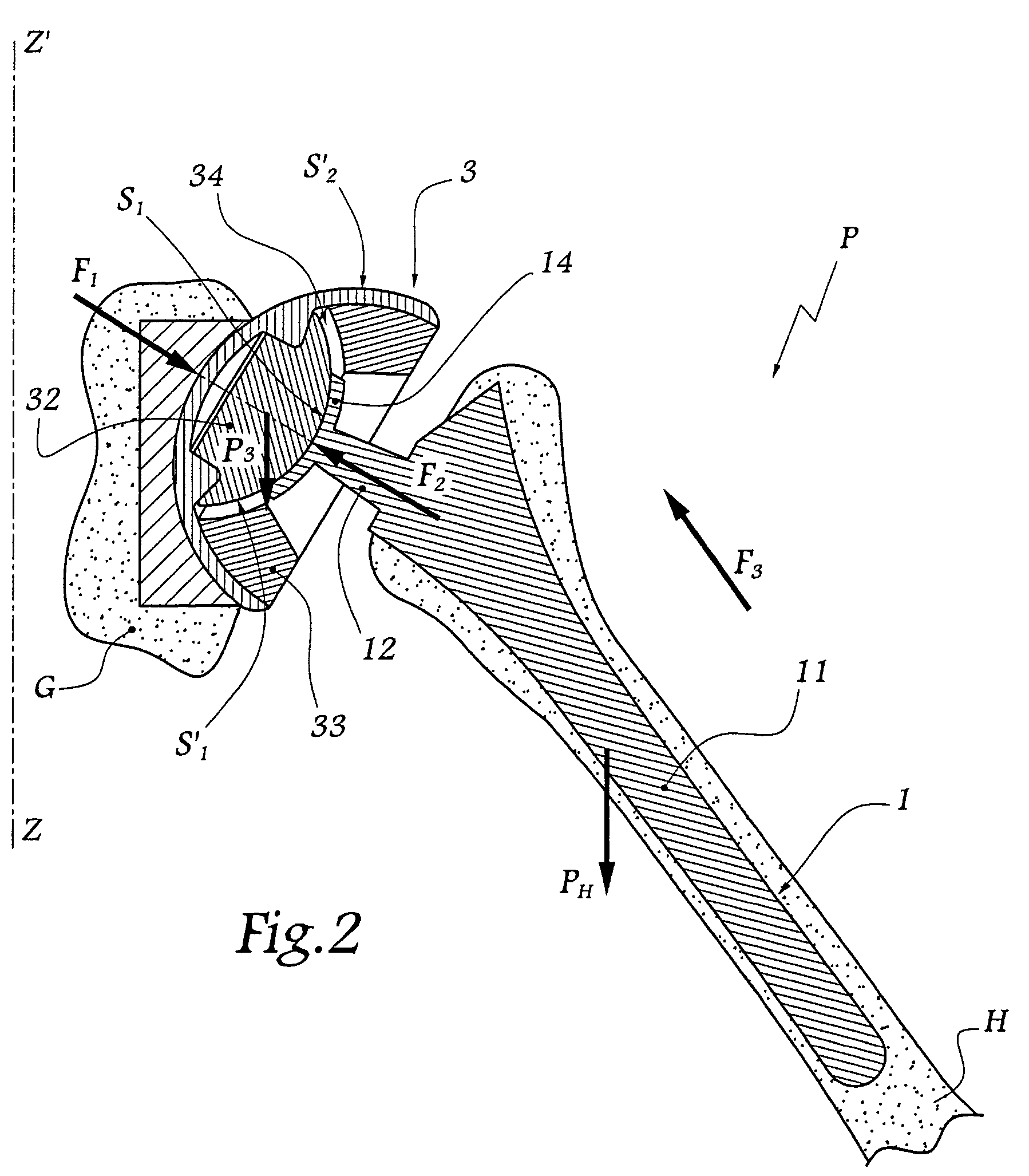Shoulder or hip prosthesis facilitating abduction
a shoulder technology, applied in the field of complete or partial shoulder or hip prosthesis, can solve the problems of unstable prosthesis, invasive glenoid component of such a surface, etc., and achieve the effects of facilitating abduction, facilitating abduction, and facilitating abduction of the femur, which is controlled by the gluteus medius muscl
- Summary
- Abstract
- Description
- Claims
- Application Information
AI Technical Summary
Benefits of technology
Problems solved by technology
Method used
Image
Examples
first embodiment
[0048]In the second form of embodiment of the invention shown in FIG. 6, the components 1 and 2 are respectively intended to be anchored in the femur F and the hip bone I. They are similar to those described with reference to the The intermediate component 3 differs from the preceding one in that it has a substantially bi-convex shape with a first surface S′2 in the form of portions of sphere of which C1 denotes the geometrical centre and a second surface S′2, likewise in the form of portions of sphere, of which C2 denotes the geometrical centre. The centres C1 and C2 are the instantaneous centres of rotation during the movements of slide of the plate 13 of the component 1 with respect to the component 3 and of the component 3 with respect to the component 2.
[0049]In practice, forces of friction (not shown) must be overcome during the movements of the humerus H or of the femur F. These forces have low values with respect to the efforts mentioned above, which makes it possible to di...
third embodiment
[0058]In the fourth form of embodiment of the invention shown in FIGS. 10 and 11, the components 1 and 2 are respectively intended to be anchored in the femur and in the hip bone. The intermediate component 3 is similar to that of the third embodiment and the convex surfaces S′1 and S′2 that it defines induce the same positioning of their instantaneous centres of rotation as previously.
[0059]This embodiment differs from the preceding one in that the assembly between the femoral stem 15 and the finger 16 is conical. A truncated part 17 is provided on the finger 16 in order to be engaged in a housing in the stem 15.
[0060]In addition, the plate 13 which defines the concave surface SI intended to cooperate with the surface S′1 of the component 3 is of substantially rectangular shape. As in the third embodiment, the smallest dimension of the plate 13 is disposed in the plane of FIG. 10.
[0061]It will be noted that the finger 16 is not rectilinear, which makes it possible to optimalize the...
PUM
 Login to View More
Login to View More Abstract
Description
Claims
Application Information
 Login to View More
Login to View More - R&D
- Intellectual Property
- Life Sciences
- Materials
- Tech Scout
- Unparalleled Data Quality
- Higher Quality Content
- 60% Fewer Hallucinations
Browse by: Latest US Patents, China's latest patents, Technical Efficacy Thesaurus, Application Domain, Technology Topic, Popular Technical Reports.
© 2025 PatSnap. All rights reserved.Legal|Privacy policy|Modern Slavery Act Transparency Statement|Sitemap|About US| Contact US: help@patsnap.com



